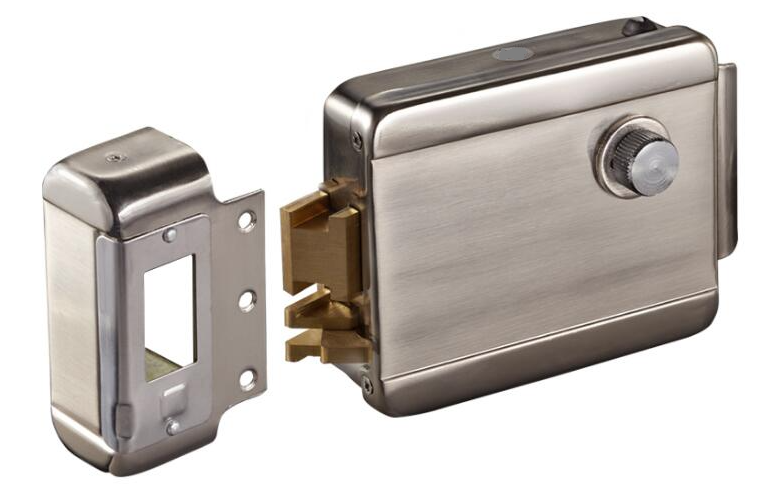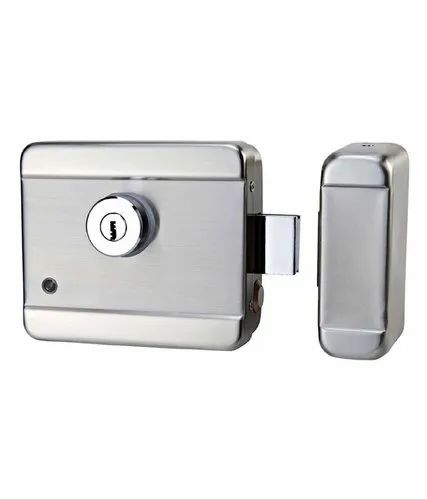Mechanical door locks play a vital role in everyday security, safeguarding our homes and workplaces. Their importance cannot be overstated; these locks are the first line of defence against unauthorized entry. Combining simplicity and effectiveness, they provide a sense of safety and peace of mind. Mechanical locks have stood the test of time, proving their reliability and durability in various settings. In a world where technology is ever-evolving, the mechanical lock remains a trusted and essential security tool. Its straightforward functionality and robust design make it an indispensable part of our daily security measures.

What are mechanical door lock?
Mechanical door locks are traditional locking systems that function through physical mechanisms. They typically involve keys to operate the lock mechanism, which moves the lock bolt. These locks come in various forms, such as deadbolts, knob locks, and lever handle locks, each suited for different security needs. Mechanical locks don’t rely on electricity or batteries, making them reliable in all situations. They are widely used due to their simplicity, durability, and ease of maintenance. Although they lack the high-tech features of electronic locks, mechanical door locks remain popular for their straightforward, proven security and ease of use.
How does a mechanical door lock work?
Understanding how a mechanical door lock works can be quite intriguing. Let’s see this with a step-by-step explanation, focusing on the most common type – the pin tumbler lock, which is a standard in many homes.
Step 1: The Key is Inserted
The process begins when you insert the key into the lock’s keyhole. This keyhole is part of the lock cylinder, where the key needs to fit perfectly to turn.
Step 2: Key Aligns with the Pins
Inside the cylinder, there are several small pins, divided into pairs of driver and key pins. Each pin pair rests in a shaft running from the top to the bottom of the lock. When the correct key is inserted, the uneven edges, or the ‘biting’, push the pins up to different heights.
Step 3: Pins Align with the Shear Line
The key lifts each pin pair to a specific height. The correct key will align all the pin pairs exactly at the shear line, which is the dividing line between the cylinder and the housing around it.
Step 4: Cylinder Turns
Once all the pins align at the shear line, the key can turn. This turning is what unlocks (or locks) the door. The turning of the cylinder activates the lock’s mechanism, which either withdraws or extends the bolt, depending on the direction of the turn.
Step 5: Bolt Moves
The bolt, which is a metal bar, extends from the side of the door into the door frame when the door is locked, and retracts when unlocked. This bolt movement is what physically prevents the door from being opened when locked.
Step 6: Removing the Key
After turning the key and either locking or unlocking the door, when you remove the key, springs above the pins push them back down into the cylinder, resetting the lock for the next use.
Step 7: Door Handle or Knob Operation
In conjunction with the locking mechanism, the door handle or knob plays a role too. When the door is unlocked, turning the handle retracts the latch, a separate mechanism that keeps the door closed but not locked.
Step 8: Deadbolts for Added Security
For deadbolts, the process is similar, but there’s no latch mechanism. Instead, turning the key in the deadbolt directly extends or retracts the bolt for high-security locking.
Step 9: Master Key Systems
In systems with a master key, there are additional pins called master pins, which allow more than one key configuration to open the lock. This is common in hotels and apartment complexes.
Step 10: Maintenance and Wear
Over time, mechanical locks can wear down. Keys may become difficult to turn, or pins may get misaligned. Regular maintenance, like lubrication and checking for wear and tear, can prolong the life of the lock.
Types of mechanical door lock
Mechanical door locks, the backbone of traditional security, come in various types, each serving different security needs. Here’s a closer look at the main types you’ll commonly encounter.
1. Deadbolt Locks
Deadbolt locks are among the most secure types of mechanical locks. They use a bolt that slides into the door frame, providing robust protection against forced entry. You’ll often find them on residential exterior doors, complementing the doorknob lock for added security.
2. Knob Locks
Knob locks are widespread in interior doors of homes and offices. Rather than in the door, the lock cylinder is found in the knob. While convenient, they are less secure than deadbolts and are best used in conjunction with other lock types.
3. Lever Handle Locks
Lever handle locks are popular in commercial settings due to their ease of use, especially in high-traffic areas. The lock mechanism is in the handle, and they are more user-friendly, particularly for people with limited hand strength.
4. Cam Locks
Cam locks are commonly found in filing cabinets, mailboxes, and lockers. They feature a cam lever that rotates to lock and unlock, providing a basic level of security for personal storage.
5. Mortise Locks
Solidity and longevity are hallmarks of mortise locks. The location of the lock must have a pocket (known as a mortise) carved into it. These locks are often used in commercial spaces and older residential buildings.
6. Padlocks
Padlocks are the only type of mechanical lock that is not permanently attached to a door or structure. They come in various sizes and are versatile, used for securing sheds, gates, and storage units.
7. Keyless Mechanical Locks
Keyless mechanical locks use a combination code instead of a key. They are convenient for areas that require controlled access without the hassle of keys, like office storage rooms.

The advantages of mechanical door lock?
Mechanical door locks have been securing our homes and businesses for years, offering several key advantages. Here’s a closer look at why they remain a popular choice:
Durability and Reliability
Mechanical locks are renowned for their durability. Made from strong metals, they can withstand significant wear and tear. This makes them a reliable choice for securing properties over a long period.
No Dependence on Power
Unlike electronic locks, mechanical locks don’t rely on electricity or batteries. This means they work consistently, regardless of power outages or electronic malfunctions, providing peace of mind in all situations.
Simplicity and Ease of Use
Their straightforward design makes mechanical locks easy to use. With a simple key turn, you can secure your door, making it user-friendly for people of all ages.
Cost-Effectiveness
Mechanical locks are generally more affordable than their electronic counterparts. Their long lifespan and minimal maintenance requirements make them a cost-effective solution for securing your home or business.
Wide Variety and Versatility
There’s a wide range of mechanical lock types to suit different security needs and door types. From deadbolts to knob locks, there’s a mechanical lock for every kind of door and security requirement.
Less Maintenance
Mechanical locks require minimal maintenance. A bit of lubrication and occasional cleaning are usually enough to keep them functioning well for years.
High-Security Options
High-security mechanical locks are available, offering features like drill resistance and complex keyways that are difficult to pick, providing an extra layer of security.
Easy to Repair
If a mechanical lock does break, it’s often easier and cheaper to repair compared to electronic locks. Their simple mechanics mean that many locksmiths can handle repairs.
Traditional Aesthetic Appeal
For those who prefer a classic look, mechanical locks offer a traditional aesthetic that electronic locks often can’t match. They can complement the style of older homes or classic decor.
Mechanical door locks provide a reliable, cost-effective, and easy-to-use solution for securing properties.
